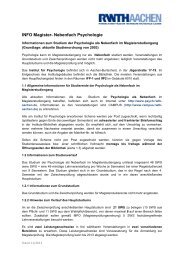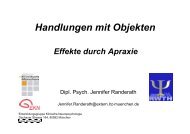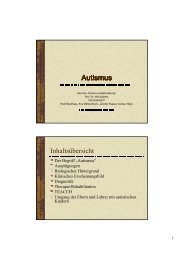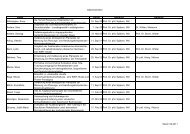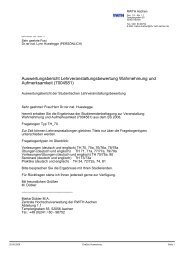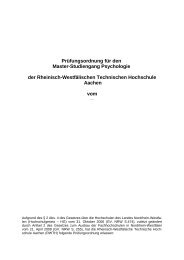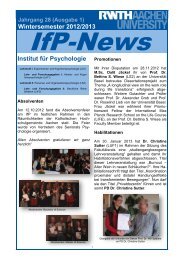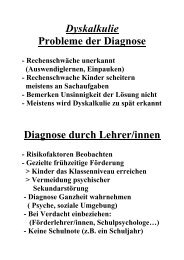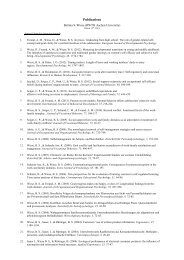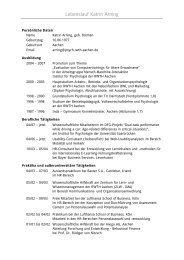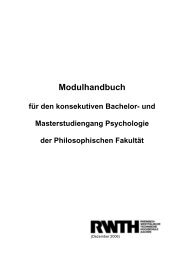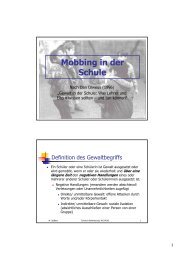1 Effects of Sensorimotor Transformations with Graphical Input ...
1 Effects of Sensorimotor Transformations with Graphical Input ...
1 Effects of Sensorimotor Transformations with Graphical Input ...
Create successful ePaper yourself
Turn your PDF publications into a flip-book with our unique Google optimized e-Paper software.
<strong>with</strong> 25 repetitions and additional 3x25 training trials in advance <strong>of</strong> the experimental trials. In<br />
total, the experiment lasted about 45 minutes.<br />
3.2 Results<br />
Blocks <strong>of</strong> tablet amplitudes were analysed <strong>with</strong> separate ANOVAs <strong>with</strong> the <strong>with</strong>in-subject<br />
factors “gain” (low, middle, and high) and “target size” (5, 10, 20, and 40 mm). For all tablet<br />
amplitudes a comparable pattern <strong>of</strong> results was found (Figure 2). Movement times and error<br />
percentages were increased <strong>with</strong> the high gain compared to the low and middle gain. In all<br />
gain conditions movement times and error percentages were lowest for the largest target and<br />
increased as a function <strong>of</strong> target size. Movement times increased from 301 ms to 519 ms <strong>with</strong><br />
the 20-mm tablet amplitude (Figure 2 top), from 404 ms to 797 ms <strong>with</strong> the 40-mm tablet<br />
amplitude (Figure 2 middle) and from 514 ms to 976 ms <strong>with</strong> the 60-mm tablet amplitude<br />
(Figure 2 bottom). Corresponding effects were observed in the errors: Error percentages<br />
increased from 1 to 19% <strong>with</strong> the 20-mm tablet condition, from 3 to 22% <strong>with</strong> the 40-mm<br />
tablet condition and from 3 to 25% <strong>with</strong> the 60-mm tablet condition.<br />
-----insert Figure 2 about here-----<br />
The ANOVA <strong>of</strong> movement times revealed consistently significant main effects <strong>of</strong> the<br />
factors “gain” (20 mm: F(2, 7) = 57.66; p < .01; 40 mm: F(2, 7) = 43.80; p < .01 and 60 mm:<br />
F(2, 7) = 33.99; p < .01) and “target size” (20 mm: F(3, 6) = 48.40; p < .01; 40 mm: F(3, 6) =<br />
32.10; p < .01; 60 mm: F(3, 6) = 53.93; p < .01). The interactions were always not significant.<br />
Corresponding effects were observed in the ANOVA <strong>of</strong> error percentages for gain (20<br />
mm: F(2, 7) = 18.22; p < .01; 40 mm: F(2, 7) = 24.05; p < .01; 60 mm: F(2, 7) = 21.05; p <<br />
.01) and target size (20 mm: F(3, 6) = 7.90; p < .05; 40 mm: F(3, 6) = 20.44; p < .01; 60 mm:<br />
F(3, 6) = 20.52; p < .01). For the tablet amplitude <strong>of</strong> 60 mm the interaction <strong>of</strong> gain and target<br />
size was also significant (F(6, 3) = 9.01; p < .05).<br />
14



